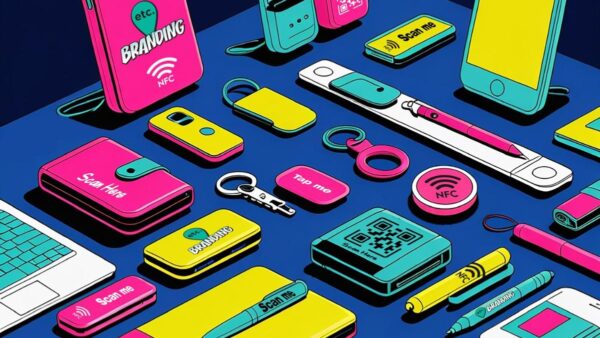Influencers are everywhere. You’ve likely seen posts with hashtags like #sponsored or #gifted on your social media today. That’s because influencer marketing is a powerful way for brands to grow.
When a brand works with an influencer, it can reach more people, including potential customers. These partnerships also help build trust. If a well-known influencer promotes a brand, it makes the brand’s message seem more genuine and reliable.
In fact, a recent survey by POW New Media found that 25% of people believe that collaborations with influencers can make a brand more memorable on social media.
In this article, we’ll show you how to find influencers for your marketing campaigns. You’ll learn what influencers do, the different types of influencers, where to find them, and how to choose the right ones for your brand.
What is an influencer?
An influencer is someone with a loyal group of followers who can influence people in a specific area or industry. They often have special knowledge, authority, or insight about a particular topic.
Influencer marketing has been around for a long time, starting with celebrity endorsements. But in 2024, the role of influencers in marketing will change. It won’t just be about how popular they are or how many followers they have; it will be more about how well they can drive results and show a clear return on investment (ROI).
Influencers help make brands feel more human and create a genuine, real-life connection with their audience. As generative AI tools become more common, people are looking for authenticity and real human connections more than ever. This is where influencer partnerships will really stand out.
Influencer vs. Creator: What’s the Difference?
Digital creators and influencers are often used interchangeably, but they’re not quite the same. The key difference is that influencers focus on sharing sponsored content, while creators develop original content. Although their roles overlap—creators can influence, and influencers can create—their goals are different.
An influencer’s main goal is to persuade their followers to buy a specific brand, product, or service because they have a financial incentive, like being paid for a promotion or earning a commission from sales.
On the other hand, a content creator’s main goal is to produce engaging and valuable content for their audience. They might also create content for brands to use as their own, often working behind the scenes.
While they could have a large following, the focus is more on their content than their lifestyle. They may earn money through sponsorships, but they often have other income sources like subscriptions, memberships, digital products, or fan contributions.
Understand Your Target Audience First
Partnering with an influencer who has a large following can boost your brand’s visibility, but to get the best results, you should work with influencers who can connect your brand with the right audience.
Knowing your target audience helps you choose influencers whose followers and social channels align with your brand. When you understand what your audience enjoys, you can select influencers they’ll relate to.
For example, a fitness brand like Athleta would benefit more from partnering with an athlete like figure skating champion Mariah Bell than with a generic lifestyle influencer with a bigger audience. As of now, Mariah has over 100,000 engaged fitness enthusiasts following her, making her a great fit for the brand.
Mariah’s experience as a professional athlete makes her recommendations more credible. Plus, since she often shares her practice sessions, showcasing Athleta’s products in training content feels natural & consistent with both her & brand’s image.
Four Types of Influencers
Influencers can be categorised into four main types based on their follower count: mega-influencers, macro-influencers, micro-influencers, and nano-influencers.
We’ll explain each type, provide examples, and discuss the pros and cons of working with them.

Mega Influencers
Mega influencers have huge followings, typically with over a million followers. This category often includes famous actors, musicians, athletes, and other public figures, though some social media stars also reach this level of influence.
For instance, Helen Christie, a UK-based content creator and actor, has nearly two million followers on TikTok and one million subscribers on YouTube. She’s collaborated with major brands like Disney+, Meta, Monzo, and Channel 4.
Mega influencers can give brands a huge amount of attention, but it costs a lot. This kind of partnership is great if your brand is popular with lots of people (like tech, food, or big stores) and you have a big budget for marketing.
Macro Influencers
Macro-influencers are popular social media stars with 100,000 to one million followers. They are well-known in specific areas like food, beauty, or lifestyle.
For instance, Mattie James is a lifestyle influencer and author based in Atlanta who has worked with brands such as Samsung, T.J. Maxx, Kroger, and J. Crew.

Like mega-influencers, macro-influencers have a large audience and their partnerships can be expensive. However, because they often have a specific focus, they’re great for brands targeting a particular group.
For example, Mattie, as a Black millennial mom, is ideal for brands wanting to reach this group with interests in clothing or skincare.
Nano-Influencers
Nano-influencers have fewer than 10,000 followers, but they usually have high engagement with their audience. They’re useful for connecting with specific communities or groups at a lower cost.
For example, Danica Nelson is a Canadian finance and travel creator who has teamed up with brands like Mydoh, Rakuten, and Porter Airlines.
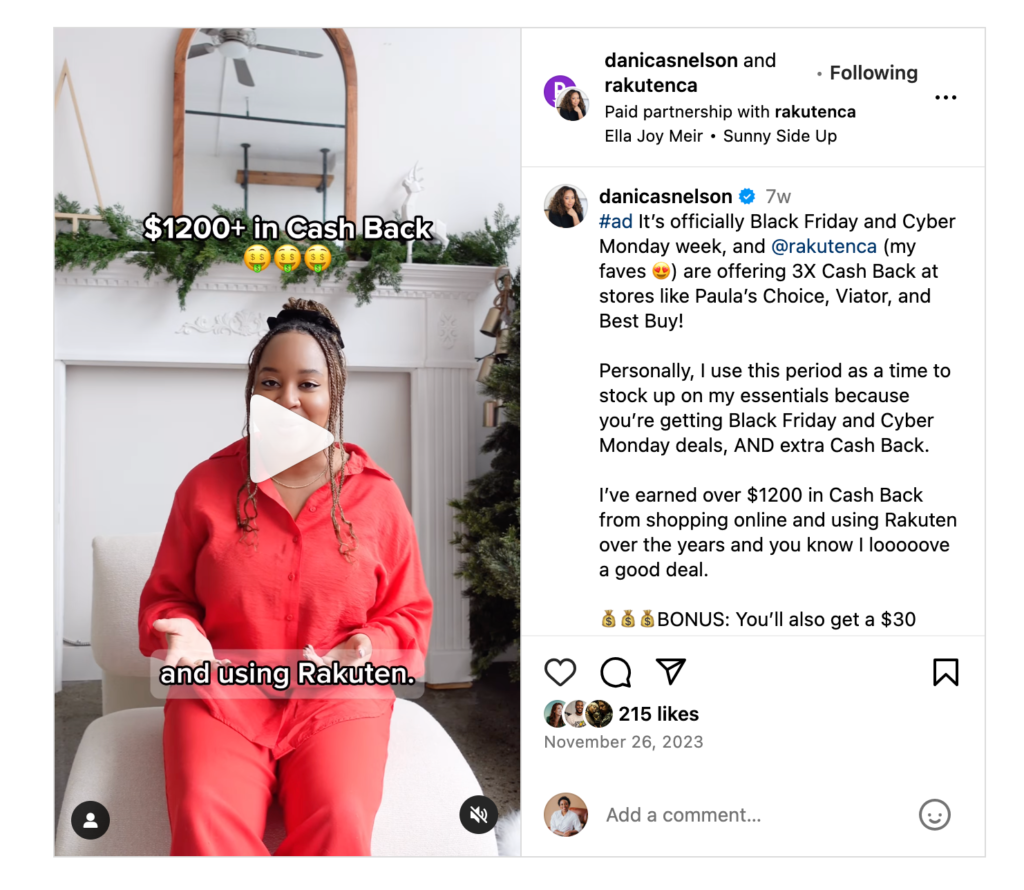
Finding Influencers for Your Brand
Finding the right influencers for your brand can take time and effort. There are many influencers to choose from, but you should work with those whose style and content match your brand’s image and message.
So, how do you find the right influencers? Here are some methods to discover and connect with them, from using influencer marketing platforms to traditional networking.
1. Use an Influencer Marketing Platform
Influencer marketing platforms make managing campaigns easier. They have various features, but many include search tools to help brands find the right influencers.
For instance, Tagger by POW New Media is an influencer marketing tool that uses social data to enhance your strategies. It helps you build a data-driven marketing plan by analysing trends, social content, posts, and profile information.
You can find creators who align with your brand values and work smoothly with your team for a successful campaign.

Tagger’s profile discovery tool has over 50 search filters to help you find influencers that meet your specific needs.
It also features an affinity engine that uses machine learning and audience insights to identify brands and creators with a strong connection to your target audience.
Additionally, the Sync feature allows you to create custom landing pages to attract, qualify, and capture potential influencers for your brand partnerships.
2. Social media
Trending industry posts are a great way to find influencers. If you see a post going viral, check who created it and if they have a large, active following. Also, look at the comments to see if any influencers are engaging with it.
For LinkedIn influencers, search a relevant keyword and filter by ‘Posts.’ Look for posts with lots of engagement, such as likes, comments, and views. High engagement often means the person has a big audience.
For example, searching for ‘SEO’ on LinkedIn led us to Danny Asling, a marketing professional with over 30,000 followers.
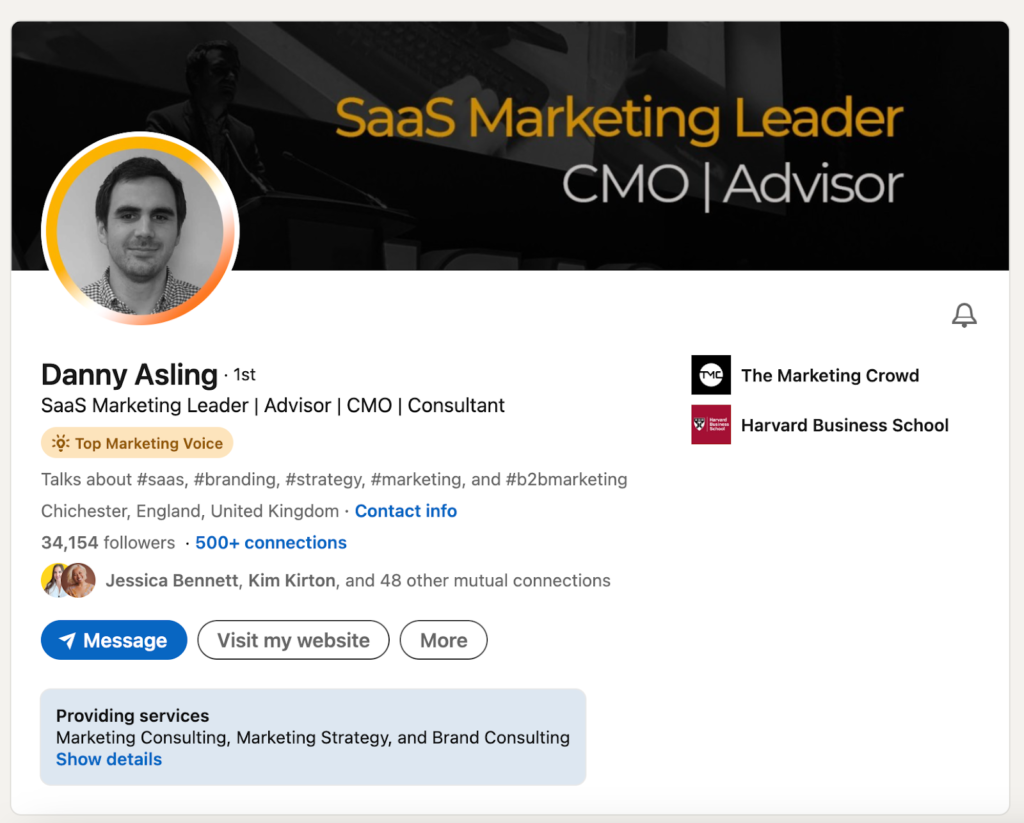
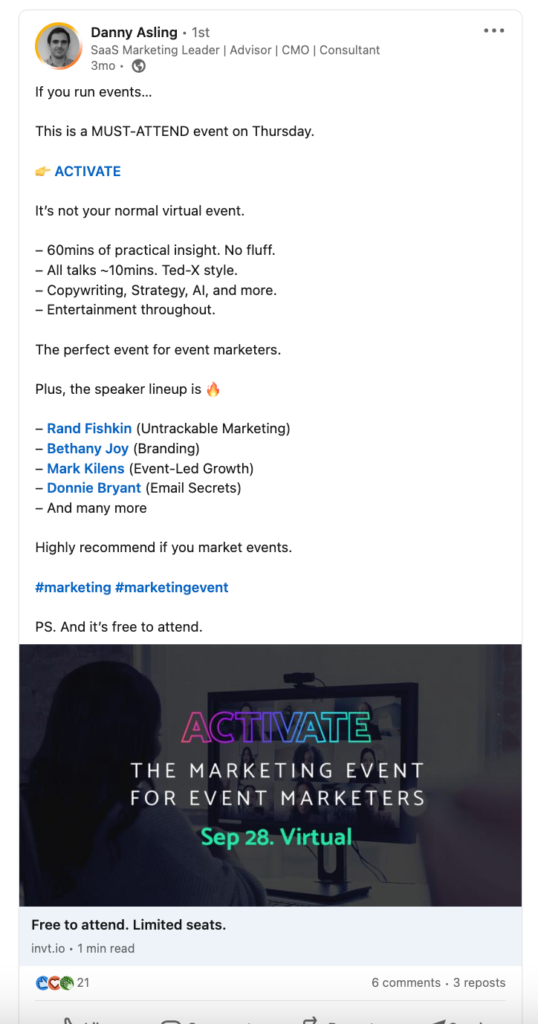
3. Hashtag searches
Use the search functions on social media platforms to find influencers by looking up keywords and hashtags related to your products or services. For example, if you run an ethical clothing brand and want to find TikTok influencers, you might search for the hashtag #sustainablefashion to discover influencers creating relevant content.

If you’re looking for Instagram influencers in your area, use location-specific hashtags. Combine your location with your niche and terms like ‘influencer,’ ‘creator,’ ‘blogger,’ or ‘vlogger.’ For example, you might use #atlantamomblogger to find influencers in Atlanta who focus on parenting or lifestyle.
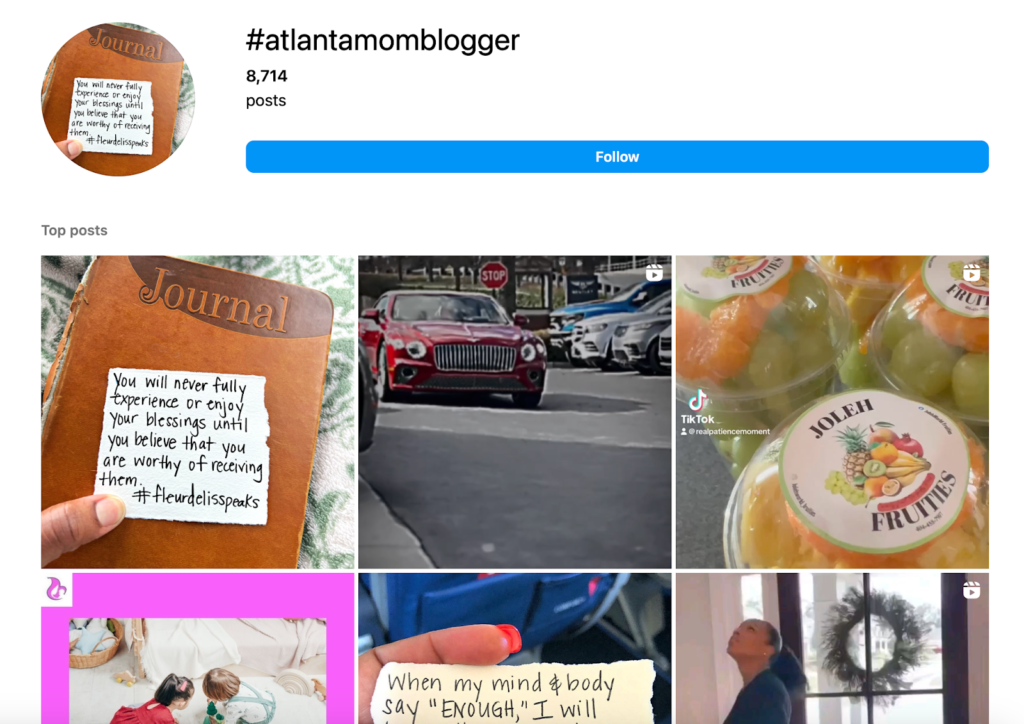
4. Competitor analysis
Are your competitors working with influencers? Check their influencers’ audiences and who they follow to find similar creators you might want to work with. Look at who gets a lot of likes or comments on your competitors’ posts, as they could also be influencers.
For example, skincare brand Mario Badescu posted a Reel from lifestyle influencer Vanessa Zambito.
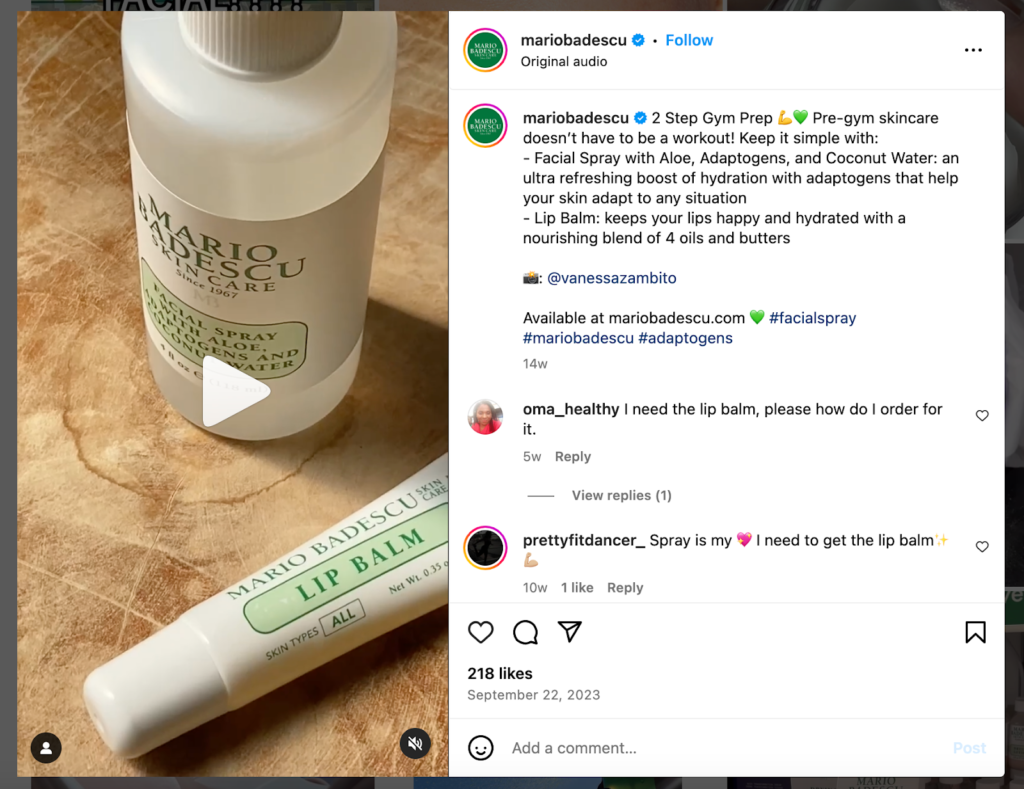
Looking at her followers led us to Elxi Elvina, a digital style creator with over 170,000 followers.
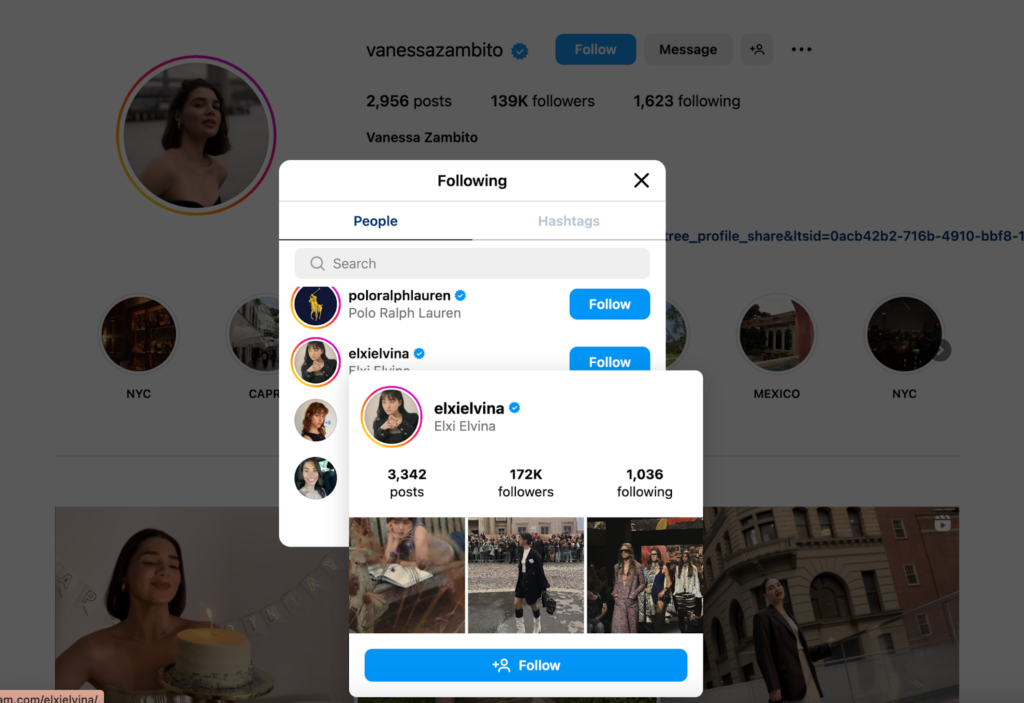
5. Social listening
Tracking social media mentions of your brand can help you find influencers who already engage with your business. POW’s Listening features, like the Trends Report, can show you trending hashtags and topics in your mentions, as well as the people and brands that interact with your business the most.

6. Search engines
You can use Google to search for influencers on social media sites. Here’s how:
- Type “site:” followed by the name of the website you want to search.
- Add a space and then type your search phrase.
For example, if you’re looking for a beauty influencer in Detroit, you’d enter: site:instagram.com “detroit beauty blogger“
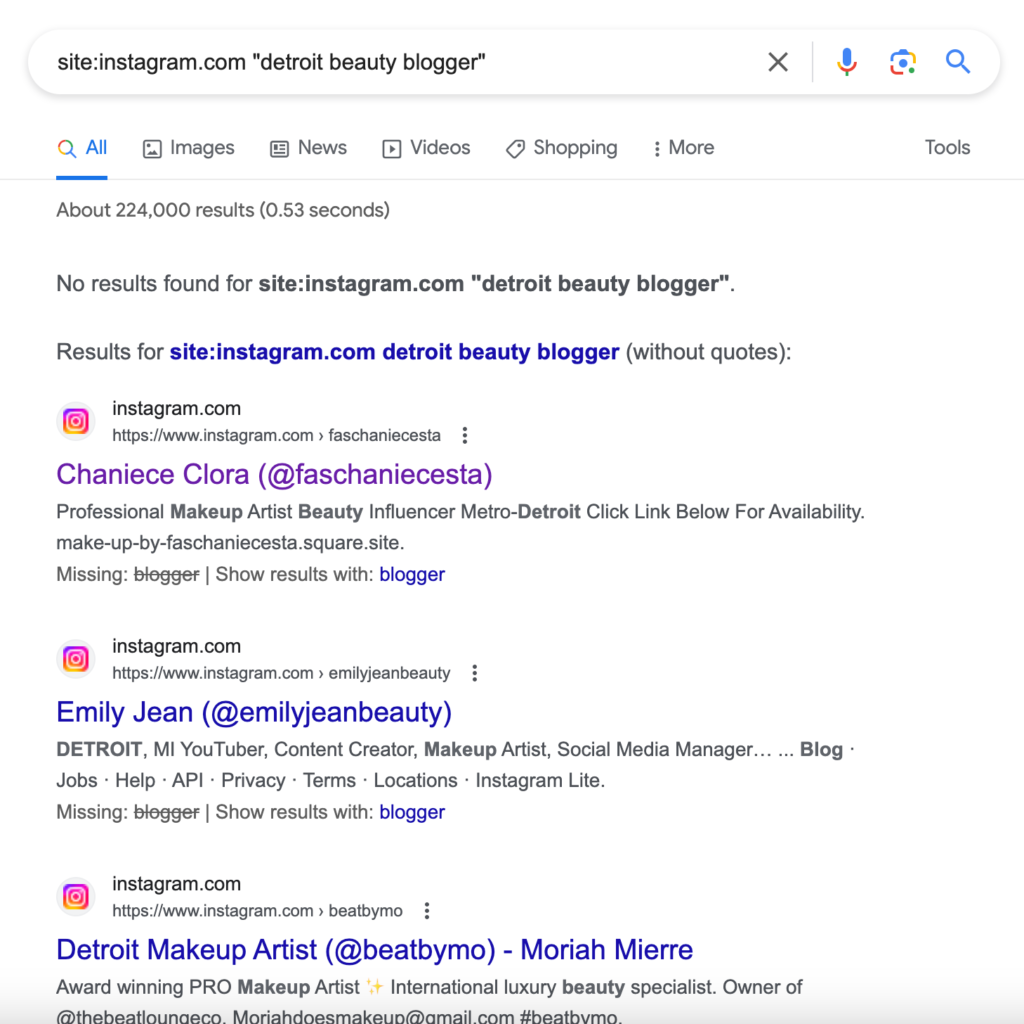
Searching for “your industry + influencers in X region” can help you find local influencers. You might also find articles listing top influencers in that area. For example, if you’re a cookware brand based in San Francisco, searching for ‘Bay Area food influencer’ will give you plenty of results.

7. Your network
One of the easiest ways to find an influencer is by asking for recommendations. Reach out to your network—colleagues, friends, industry contacts, business partners, etc.—to see if they know any influencers who match your criteria.
You can also post about your search on social media. Ask your network to recommend or tag potential influencers in the comments and encourage them to share or like your post to increase its visibility.
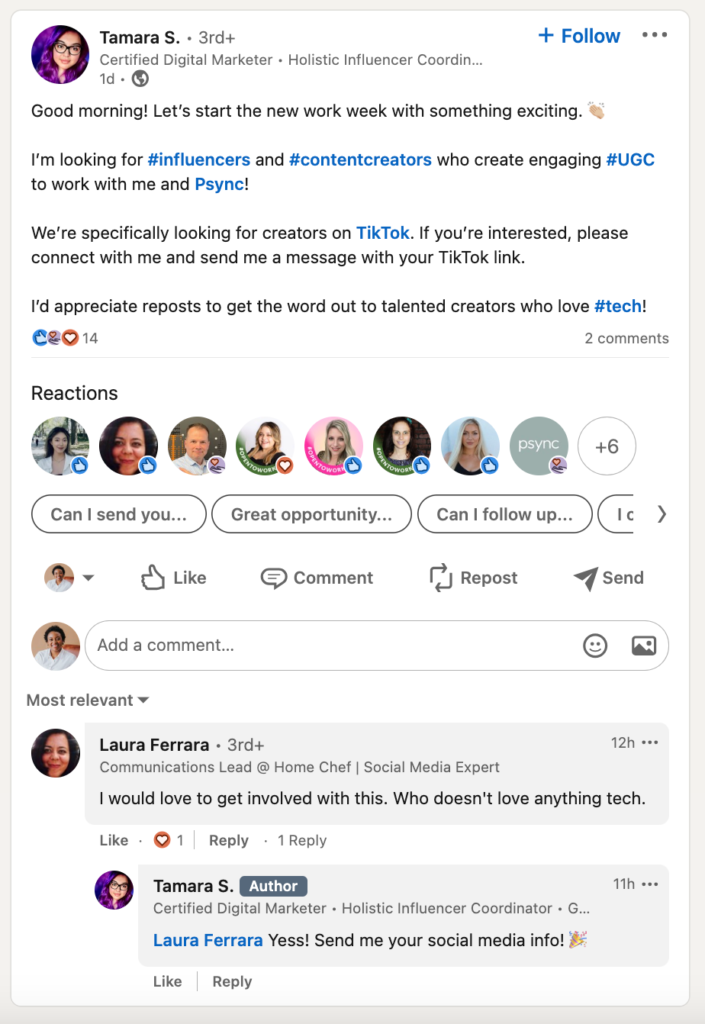
8. Industry events and conferences
Even though influencers mostly work online, you can still connect with them in person at events and conferences.
Attending creator-focused events like VidCon or CreatorConf can help you discover new influencers and get tips and inspiration to improve your next campaign.
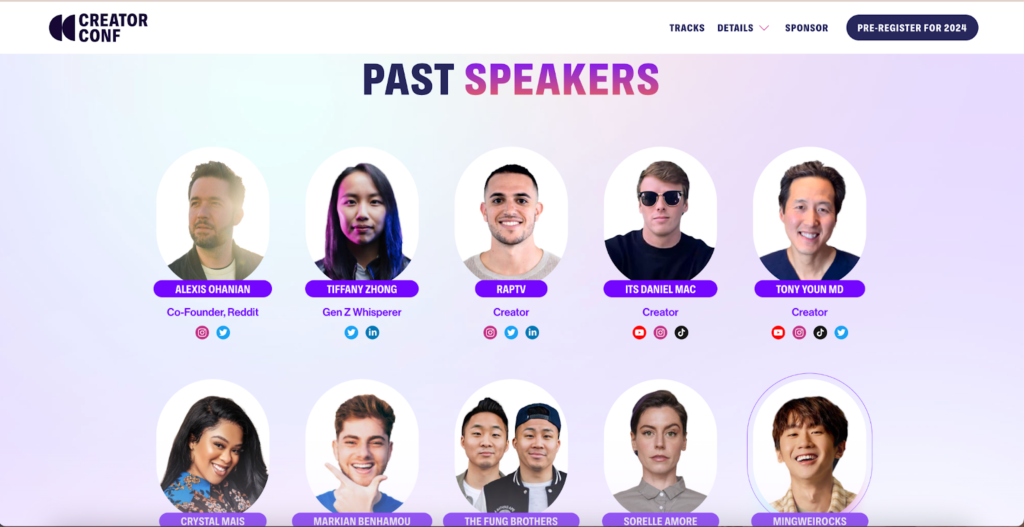
If you can’t attend events in person, look up industry events and see who’s speaking. Event organisers often invite influencers as speakers because their large audiences attract attendees.
Finding influencers is just the first step. It’s important to tell the real ones from the fake ones. Some influencers buy followers to look more popular than they are.
To spot a fake influencer, check their follower-to-engagement ratio and the quality of their engagement. If an influencer has many followers but few likes or comments, or if the comments are generic and not related to the post, they might not be genuine.
Found the Perfect Influencer? What’s Next?
Before finalising a partnership with an influencer, make sure they’re a good fit for your brand. Review their content to see if it matches your brand values and check if their audience engages with it meaningfully.
Ensure the influencer has the expertise to promote your product effectively. Most established influencers have media kits with details on their audience, niche, follower demographics, growth, engagement metrics, content types, and platforms, which can help you evaluate them.
Also, think about what partnership might look like. Review some influencer marketing campaign examples so you have concrete ideas when you pitch your influencer.
Influencer marketing involves a lot of steps, but you don’t have to do it alone. With Tagger by POW New Media, you can find authentic creators, manage campaigns, measure success, and grow your brand with confidence.f




